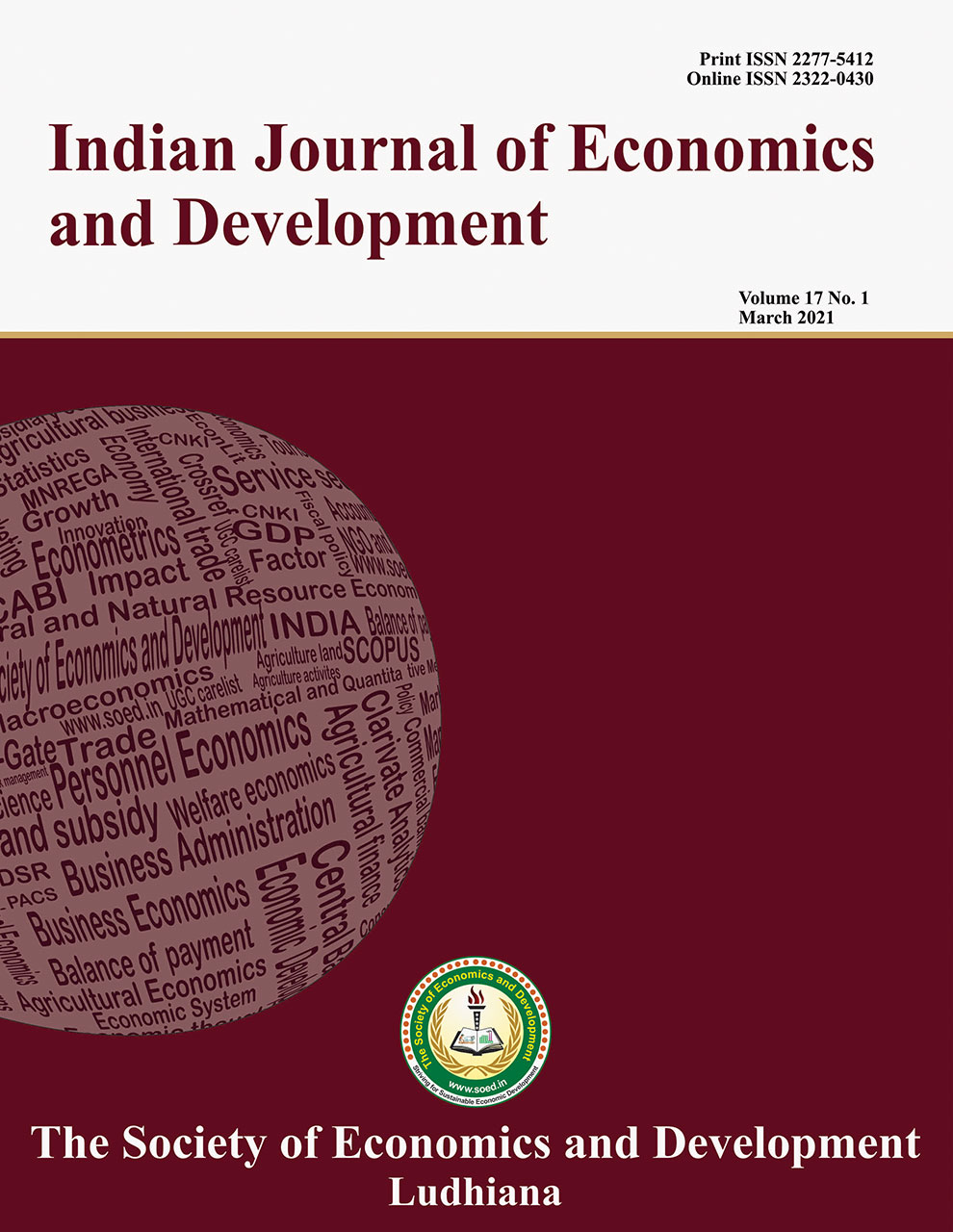Marketing Pattern and Constraints of Goat Farming in Punjab

Price: ₹ 1000
Author: Navjot Singh1, Varinder Pal Singh2 and Inderpreet Kaur3
Author Address: 1Research Scholar, 2Assistant Professor (Livestock Economics), and 3Assistant Professor (Livestock Economics)-cum-Head, Department of Dairy Economics and Business Management, College of Dairy Science and Technology, Guru Angad Dev Veterinary and Animal Sc
Keywords: Garrett’s ranking, marketing and production constraints, marketing pattern, marketed surplus.
JEL Codes: Q12, Q13.
Abstract
The present study covers three districts across three agro-climatic zones of Punjab state viz. Sub mountainous, Central, and South Western zones for examining the marketing pattern, production, and marketing constraints faced by goat farmers. It was observed that the marketed surplus in goat milk and live animals was more than 95 percent. The sale of the milk and live animal mainly formed the farm. The goat milk was sold mainly to the consumers and live animals to retailers. The frequency of sale of goat milk was regular and that of live animals was quarterly as well as half-yearly. The mode of payment was mainly cash. All the farmers used to get the payment within 15 days. Fifty percent of farmers had access to market information and the main source of information was friend and farmer’s fares. The major production constraints faced by goat farmers were the problem of fodder, disease incidence, and social issues. The other production constraints were the high price of animals, the problem of grazing, and inadequate capital to invest. Further, the major marketing constraints were less price of meat and milk and no regular payment. The other marketing constraints were lack of proper market, fluctuating prices of goat milk, and meat. There is a need of addressing the production and marketing constraints to enhance the profitability of goat farming.
Description
Indian Journal of Economics and Development
Volume 16 No. 2, 2020, 291-295
DOI: https://doi.org/10.35716/IJED/20010
Indexed in Clarivate Analytics (ESCI) of WoS
Navjot Singh1, Varinder Pal Singh2 and Inderpreet Kaur3
1Research Scholar, 2Assistant Professor (Livestock Economics), and 3Assistant Professor (Livestock Economics)-cum-Head, Department of Dairy Economics and Business Management, College of Dairy Science and Technology, Guru Angad Dev Veterinary and Animal Sciences University, Ludhiana-141004
Corresponding Author’s Email: dhindsavp@gmail.com



